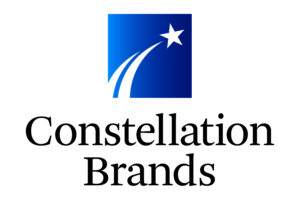With the raising of interest rates by the Federal Reserve, one may wonder if the recent flurry of M&A can continue.
By Barbara Barielle
Daily news in the wine industry includes frequent stories of acquisitions, mergers and consolidation. Every now and then, one of these unions knocks the wind out of industry insiders and consumers alike, as they try to reconcile changes in a brand they have trusted for years or wonder what the future holds for their go-to wine.

“Like any good or service, there are two components that drive a sale: supply and demand,” says Rob McMillan, EVP and founder of the wine division for Silicon Valley Bank. “On the supply side, transactions are still taking place 15 years after this trend started. The three issues supporting the desire for change are still the same as in 2008: Normal industry life-cycle progression; transition to the next generation of family owners; and challenging and changing business conditions for individual owners.”
He continues, “Add to that the expectations surrounding price. Sales are more frothy when price meets or exceeds a seller’s expectations.”
Supply and demand
McMillan points out that demand comes from buyers still in acquisition mode.
 Under the category of foreign buyers looking for a “U.S. footprint,” international style-setter LVMH recently expanded its presence in Northern California with the acquisition of Joseph Phelps Vineyards in Napa Valley. LVMH’s Moet Hennessy division acquired Joseph Phelps and its Napa and Sonoma county vineyards. Although the price was not disclosed, rumors have it between $400 and $750 million — a new record for a Napa brand, but one that makes sense, given that it includes significant acreage of revered vineyards.
Under the category of foreign buyers looking for a “U.S. footprint,” international style-setter LVMH recently expanded its presence in Northern California with the acquisition of Joseph Phelps Vineyards in Napa Valley. LVMH’s Moet Hennessy division acquired Joseph Phelps and its Napa and Sonoma county vineyards. Although the price was not disclosed, rumors have it between $400 and $750 million — a new record for a Napa brand, but one that makes sense, given that it includes significant acreage of revered vineyards.
LVMH CEO and chairman of the company’s wine division, Philippe Schaus, said the company was looking to add a “strong red” to its portfolio. The comment raised the eyebrows of all those aware that LVMH also owns Bordeaux’s Cheval Blanc and Margaret Rivers’ Cape Mentelle, among other notable reds that are considered some of the best in the world.
Balancing a portfolio
Another buying sector still in the market is the large domestic player looking “to balance its heavy production, lower-priced brands with [additional labels] that are in demand at higher price points,” says McMillan.
 The recent acquisition of star sommelier Larry Stone and French partner Dominique LaFon’s Lingua Franca by Constellation Brands is the latest of these jaw droppers. Although there was a bit of buzz in the Willamette Valley of a potential Lingua Franca sale, many had trouble understanding this carefully planned boutique brand, with its impeccably sourced vineyard and rock star winemaking team, becoming part of the behemoth Constellation Brands (CBI).
The recent acquisition of star sommelier Larry Stone and French partner Dominique LaFon’s Lingua Franca by Constellation Brands is the latest of these jaw droppers. Although there was a bit of buzz in the Willamette Valley of a potential Lingua Franca sale, many had trouble understanding this carefully planned boutique brand, with its impeccably sourced vineyard and rock star winemaking team, becoming part of the behemoth Constellation Brands (CBI).
Robert Nicholson, president of International Wine Associates, a major player in wine industry M&A, says, “[It was] not a surprise move for Constellation Brands. It’s been building its ultra premium portfolio now for a few years — for example, Shrader Cellars and Booker Wines — and this provides the company with its first entry into Oregon.
Nicolson adds, “We see Oregon as a major opportunity in the luxury wine business with the growth of Pinot Noir in the United States.”
Finally, while the bargain-priced market seems to be shrinking, demand for luxury wines and Champagne is off-the-charts. LVMH’s statement pointed out that the return of tourism to Europe has meant a demand for rarities, like bubbles and Bordeaux, that can barely be met.
What the future holds
Of course, acquisitions take money and, with the raising of interest rates by the Federal Reserve, one may wonder if this flurry of M&A can continue. McMillan admits that, “supply and demand are underpinned by a few other items, such as the availability of capital.
“It’s common for acquisitions to be financed to some point and, although financing is still available for acquisitions, [it comes at] higher prices,” he points out. “In theory, higher rates reduce a buyer’s return, which should cause them to present a lower price offer to the seller. If that lower price isn’t meeting the seller’s expectations, there will be fewer transactions taking place.”
Additionally, McMillan says, “There is still a lot of [investment] cash looking for transactions and returns,” but business conditions can change rapidly. “When markets are making a bull run, more transactions take place. If the economy is in a recession, most acquisitions stop. That means as we move closer to a recession — or the belief one may be upon us — transactions will normally slow.”
While there are expectations of continued acquisition activity, only time will tell. Premium wine demand is high and, even with a recession, there are consumers that will fuel the luxury market. As it stands, Northern California remains a hot target but, Nicholson says, Oregon is already a player and Washington state is coming on strong.
__________________________________________________________
 Barbara Barrielle
Barbara Barrielle
Barbara Barrielle was a longtime publicist in sports and wine before going to the other side as a wine, travel and entertainment writer. She also produces films and has a documentary “Crushed: Climate Change and the Wine Country Fires” releasing in 2021. Current publications Barbara writes for are AARP Magazine, Northwest Travel & Life, East Hampton Star, Napa Valley Register, Oregon Wine Press as well as Wine Industry Advisor. She lives in Healdsburg, travels extensively and studies wine and languages.

















